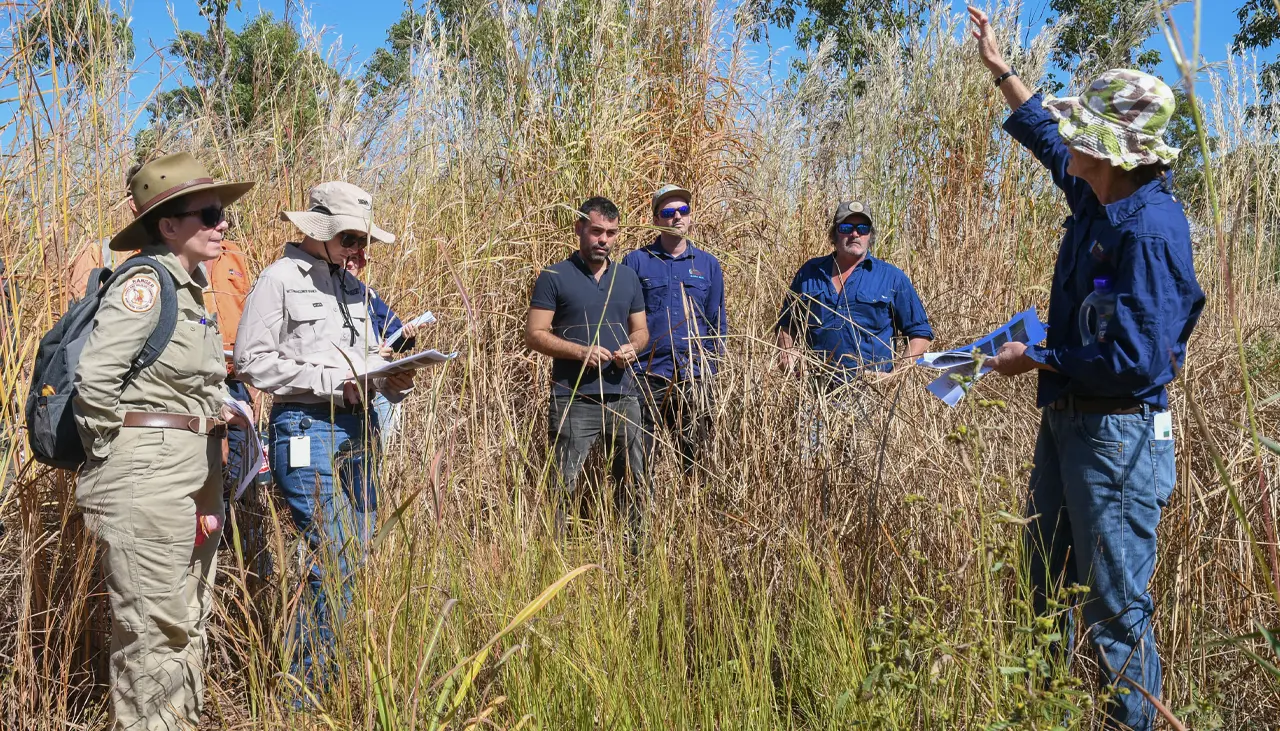An organised collective is gaining ground in the battle against gamba grass, the scourge of the Top End.
Story + Photos Kerry Sharp
Beneath a 4m gamba grass thicket on Darwin’s rural outskirts, Hamish Clark, Sam Kruse and Col Smith are barely visible from a few steps away. They’re talking tactics with their foot soldiers, who are armed with spraying gear ready to attack pockets of weed.
Seasonal Kakadu tour guide Hamish, former golf greens keeper Sam and retired bus mechanic Col are key players in the Gamba Army, a unique Top End labour force of more than 40 specially trained men and women who’ve enlisted to help tame one of northern Australia’s greatest environmental headaches.
The drought-resistant African native gamba grass (Andropogon gayanus) severely threatens biodiversity in the NT and Queensland, and now to a lesser degree in the Kimberley. Gamba was introduced to the Territory in 1931 and then to Queensland in 1947 as a globally accepted improved pasture feed for cattle. But land managers soon realised that this towering import, mostly spread by seeds carried on the wind, choked out tropical and subtropical ecosystems and fuelled ferocious wildfires many times more intense than regular grass fires. Alarmed by its rapid spread and landscape destruction, Australian authorities declared gamba grass a weed of national significance in 2012.
In 2020, as the COVID pandemic challenged global economies, the NT Government sought community feedback on ways to stimulate the local economy and get displaced workers back into jobs. Territory Natural Resource Management (TNRM) and other environment-based interests suggested a ‘Gamba Army’ to take on the grass. The NT Government backed the concept with a one-year trial that extended to 3. It was recently funded for another 2 years.
This story excerpt is from Issue #150
Outback Magazine: Aug/Sep 2023










